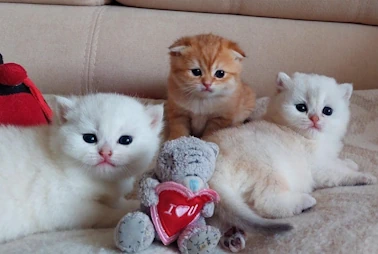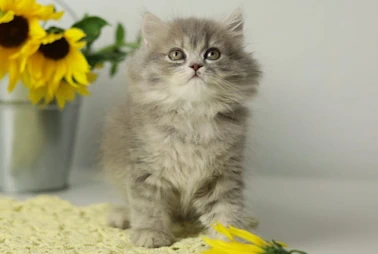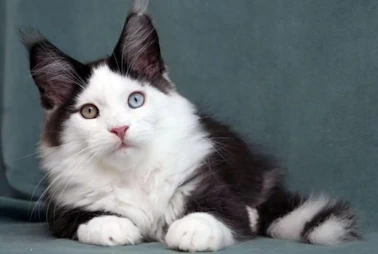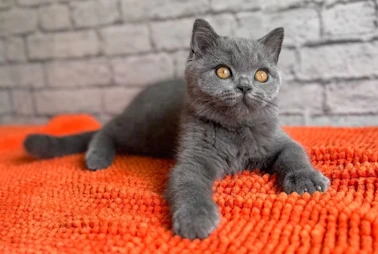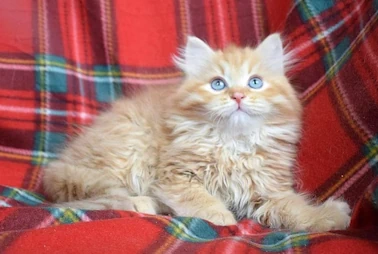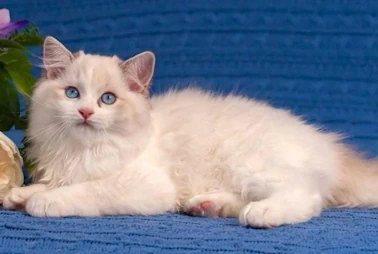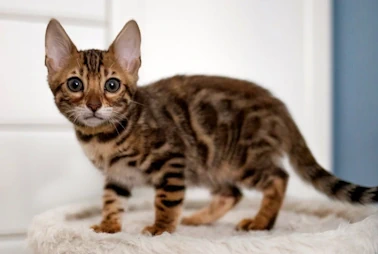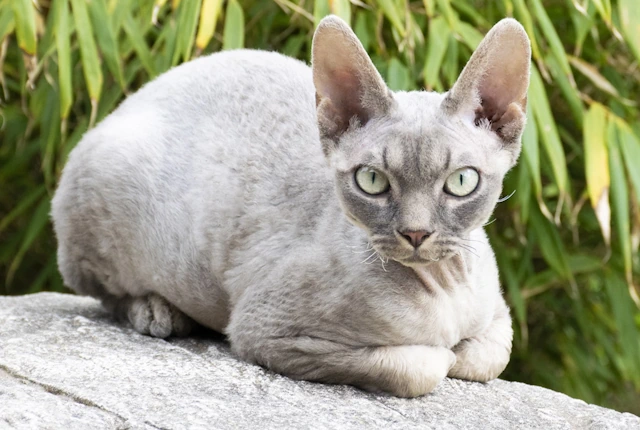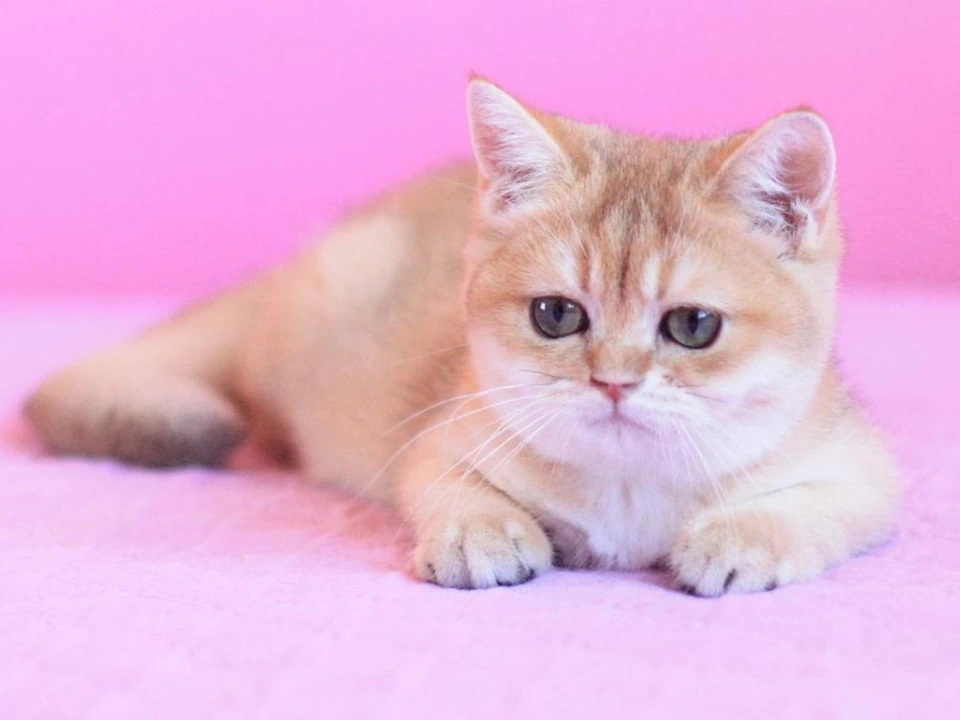
British Shorthair Kittens For Sale Near Me Nationwide Delivery!!!
The origin of British cats
The pure breed of British cats was bred in the UK more than 200 years ago. Features of the breed, namely a thick coat with an undercoat, were determined by the climate of England - constant rains and cold winds. The ancestors of the British are Egyptian and Italian cats, which were crossed with other breeds. Short-haired cats tolerated any living conditions well, were excellent rodent hunters and were liked by the British for their equanimity and aristocracy. For the first time, a British cat, recognized as purebred, was presented at an exhibition in 1889.
British Cat Standards
- The head is round with prominent cheeks and pronounced cheekbones. The forehead is devoid of bulges between the ears, round and gently turns into a straight, fairly short and wide nose. The ears are small, with rounded ends, set wide and low.
- The chin is smooth and powerful, moderately wide, but not sharp.
- The eyes are round, large, set wide. It is allowed to narrow the corner in the direction of the ears. They can be orange, green, blue, but always a rich shade. The final color can be acquired only after a year or even a year and a half, while the green rim around the pupil is considered a disadvantage.
- The body is medium or large in size, compact, low, with a straight, short back and wide chest, massive shoulders and hips. A powerful physique causes a weak expression of a strong neck.
- The limbs are muscular and short, the paws are round, wide and strong.
- The tail is of medium length, blunt, softly rounded at the end and having a wide base.
- The coat is thick, dense, short with a well-developed undercoat, which causes a characteristic "plushness". The standard does not regulate its color, so all variations are allowed.
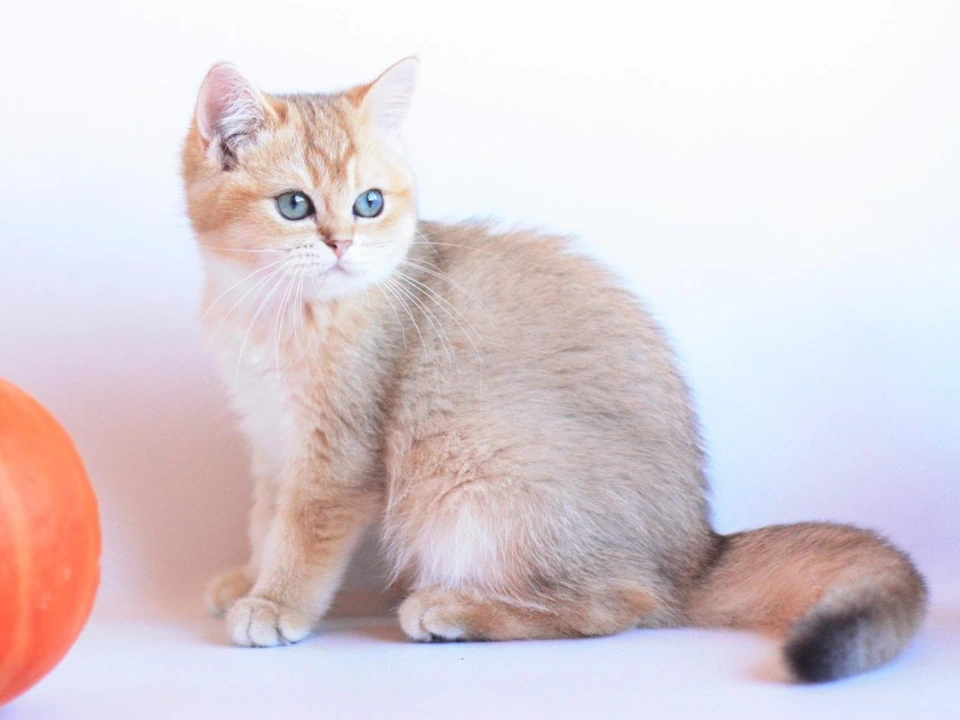
Habits and habits
The British quickly adapt to the new environment, becoming attached to several family members. They like to be in the company of people, contact them or observe what is happening from above. They like to be petted, but you can't keep them in your arms for a long time if they don't want to. British cats are calm and patient, clean. Caring for a Brit involves litter box training, and they quickly understand where they should go.
Living conditions
When planning the care of cats of the British breed, it is necessary to provide for them a couch or a house in a secluded place, because cats of this breed sometimes require privacy. It is advisable to place the couch away from heating devices and drafts. British cats are not afraid of the cold, thanks to their dense undercoat, so they can live in any conditions.
Advantages of British cats
- Docility and lack of a tendency to aggression, so when carrying out any undesirable actions for the animal, the cat will not bite, scratch and take revenge.
- Energetic and playful.
- Friendliness, good attitude towards children.
- Attentiveness and sensitivity to the mood of each of the family members, so the cat will not get bored at the wrong time.
- Almost complete absence of voice (instead of the classic purr, the British wheeze).
- A calm attitude towards forced loneliness, so cats are well suited for busy people.
- A well-developed, lively mind.
- Neat attitude to household items and cleanliness.
- Good health.
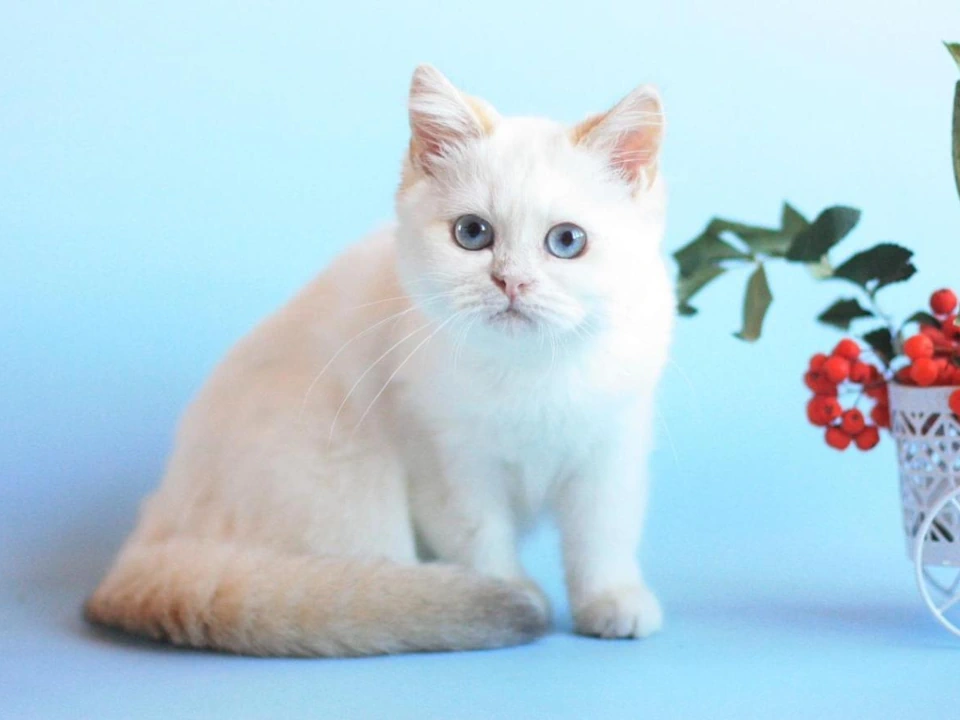
Disadvantages of the breed
- The periodic need for solitude, which does not need to be disturbed in order to avoid the development of nervousness and isolation.
- Sometimes excessive independence.
- They do not treat strangers very well and rarely allow themselves to be caressed, but they do not show aggression.
- They do not tolerate excessive manifestations of self-love, so they rarely ask for their hands and allow stroking.
- In the absence of proper upbringing, they can be uncontrollable from childhood.
Our Kittens for sale!
- Affectionate, easygoing, sensible, friendly.
- Once known as the British Blue and exclusively bred for blue-gray coloring, the British Shorthair cat now comes in a multitude of colors, but it retains its typical rounded profile and it's delightful – yet somewhat reserved – personality.
- Gregarious, kind, intelligent, family-oriented.
- Bold features, a thick, luxurious coat, and an incredibly friendly personality set the Maine Coon cat apart from the rest.
- When you meet a Maine Coon cat, you'll understand why they are nicknamed the gentle giants of the cat world!
- Folded ears and sweet expressions, these family-friendly cats are cute beyond compare.
- Family-oriented, quiet, affectionate, loyal.
- Gentle and playful, Scottish cats are less rambunctious than many other breeds.
- Energetic, friendly, playful, affectionate.
- Formally known as the Siberian Forest Cat, the Siberian is a medium-sized semi-long-haired breed with a stunning triple coat and a charming personality.
- Intelligent and playful, the Siberian cat loves to give and receive affection.
- Sweet, easygoing, gentle, relaxed.
- While some kitties dislike being held, the Ragdoll cat seems to live for cuddles. And while many cats are content to keep themselves entertained.
- Ragdolls actively seek the company of their favorite humans, following family members from one room to the next.
- Energetic, curious, affectionate, intelligent. The Bengal cat originated as a cross between the Asian leopard cat and a domesticated cat.
- Playful and active, Bengal cats are excellent pets.
- These incredible felines enjoy affection and develop close bonds with their family members.
- Doglike, energetic, people-oriented, mischievous.
- Petite size, pixie-like facial features, and an incredibly sociable personality make the Devon Rex cat a favorite.
- If you've been looking for a low-shedding cat, the Devon Rex comes close.
